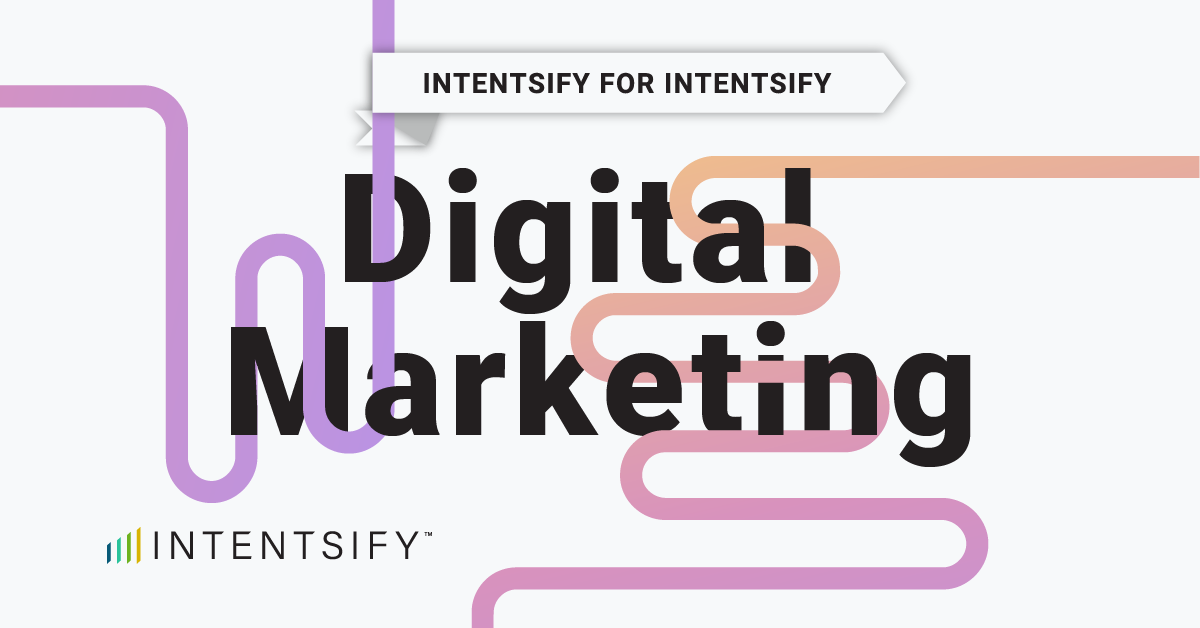Identifying where your potential customers are in the buyer’s journey provides one of the most critical marketing intelligence tools at your disposal. When you know where your prospects are in their journey, you can better select the right marketing tactics, craft the most effective messaging, and even develop pieces of content to reach them where they are in the buy cycle.
Each stage correlates to specific, actionable B2B marketing strategies—and we’re here to outline some of those steps in detail.
Note: Organizations often break the pre-sale buyer’s journey into more than three stages, depending on numerous factors such as go-to-market strategy, business model, sales cycle length, etc. For purposes of clarity, we’re focusing on the three higher-level stages shared among the vast majority of B2B organizations.
What Are the 3 Stages of the Buyer’s Journey?
The buyer’s journey describes a clearly defined path to purchase, and in its simplest form, follows three steps:
- Identifying a problem: At this stage, the buyer becomes aware that there’s a problem or pain point they need to address.
- Considering a solution: Now that the buyer understands their specific problem, they begin to research a solution.
- Making a decision: Once the buyer has explored solutions, the next step is to compare providers and make a final decision.
One key point to keep in mind when assessing marketing tactics for the B2B buyer’s journey is that it’s much more complex than the B2C journey. With B2B, the buyer is likely researching extensively prior to reaching a point where they want to talk to sales (and after as well), and the sales cycle tends to be much longer.
With thoughtful marketing tactics tailored to each buyer stage, you can help to facilitate the sales process and successfully nurture leads to the deal stage.
Stage 1: Awareness
As we’ve discussed, during the awareness stage, the buyer identifies a problem, challenge, or pain point that they’re experiencing. Because this is a preliminary stage in the buy cycle, your marketing tactics should promote education surrounding that pain point. Here are some specific ways to equip your buyer with information.
Paid Media
Focus on content syndication, programmatic advertising, and paid social media. Each of these channels offers the perfect platform for distributing educational content while simultaneously—but subtly—promoting your brand. (Remember, brand promotion is not the priority at this point.)
If you’re using a target account list (TAL), don’t restrict it too much or you won’t generate the lead numbers you need to nurture through the next stage. Provide your media partners with a TAL comprising at least three times the number of accounts as your campaign’s lead goal, and ensure that your TAL accounts employ your targeted job titles—and variations thereof.
Content Marketing
At this stage, keep your educational content high level. You want to capture your potential leads’ attention with easily digestible pieces of content, which should include social media posts reflecting your brand’s point of view on industry-related issues, short-form blogs, and infographics. These highly visual content types should address a problem the buyer is trying to solve while helping to build your brand credibility.
Email Marketing
Use your company newsletter and even an opt-in blog subscription email to further educate leads and boost your brand credibility. Include CTAs—sparingly—within those emails to allow your subscribers to “learn more” or “talk to an expert” when they’re ready to move to the consideration phase.
Bonus Tip: Intent Data Topics/Keywords for Awareness
Prospects early in their buyer’s journey aren’t yet aware of your solution or possibly even your brand. At this stage, use intent data signals surging around topics and keywords related to general challenges and pain points your prospective customers feel, as well as the general solution your products/services provide.
For example, if you were marketing a content management system that helps businesses organize their content assets, you should see trending topics/keywords around “digital content,” and “content organization.” Note that these phrases aren’t specific to product categories but rather general needs.
Stage 2: Consideration
Now that your buyers are considering solutions, it’s time for your brand to move closer to center stage! Your marketing efforts should focus on helping leads make an informed decision about solving the problem they’ve identified.
Paid Media
On the paid media front, use Google remarketing ads to target accounts that have already visited your website. (A website visit indicates that a buyer has already identified your product or service as a potential solution.) In your RLSA ads (remarketing lists for search ads), try bidding on consideration-based keywords that speak to your solution; for example, with your CMS product, keyword phrases like “best content management platforms” or “how to choose a content repository” can help trigger your ad to appear to a previous site visitor.
Similarly, LinkedIn retargeting allows you to create audiences/lookalike audiences and retarget them based on whether they visited a website page, viewed a video ad, engaged with your company page, and more. Concentrating on leads who have already expressed interest in your brand helps you spend your budget more effectively and increases the chance of conversion.
Content Marketing
Continue to develop brand credibility while creating content that mitigates your buyer’s pain points. At this stage, gated content like ebooks and whitepapers works well—and the advantage of gated content is that you can remarket to those leads to push them farther down the funnel. Other educational content like case studies and vendor comparison guides provides in-depth information while showcasing your brand’s industry expertise. As in Stage 1, refrain from overly promotional content—there’s time for that in Stage 3!
Email Marketing
Leverage your email marketing strategy to the max during the consideration stage. Create nurture tracks triggered by specific content downloads, and personalize the copy as much as you can with 1:1 messaging and personalization tokens (e.g., company name, contact name). Offer links within the emails to visit dedicated website product pages that reinforce your solutions, as well as to blog content, guides, and brand videos that talk about how your product solves for the buyer’s problem.
Bonus Tip: Intent Data Topics/Keywords for Consideration
At this stage, intent data will show a greater level of activity around topics and keywords related to specific products/service categories. Continuing with our CMS example, you may see a lot of activity around topics and keywords similar to “CMS vs CRM” or “popular CMS platforms.”
Stage 3: Decision
At the decision stage, your buyer is finally ready to select a vendor! Concentrate your marketing efforts on encouraging your qualified leads to make a purchase decision.
Paid Media
The paid media tactics you implement in Stage 3 will be similar to Stage 2: LinkedIn retargeting and Google remarketing ads help to keep your brand top of mind. And because your lead is now comparing providers, invest Google ad spend in branded campaigns that bid on iterations of branded keywords. Also, create a competitor campaign with keywords that emphasize terms that a buyer who’s evaluating options might be searching. For example, for someone who’s considering CMS providers, you might bid on “Company X versus Company Y” or “Company X alternatives.” Customize your landing pages to the specific personas or accounts that you’re targeting to reinforce the idea that your business solution is the one the buyer needs.
Content Marketing
The content you create for Stage 3 buyers should bridge the gap between marketing content and sales enablement assets, with the goal to convert prospects to sales opportunities and customers. At this stage, you can—and should—talk about your brand and product as much as you’d like! In fact, link your product or service to the solutions and challenges you’ve discussed in Stage 1 and Stage 2 content. Create case studies, testimonials, detailed vendor comparison guides, and product-centered whitepapers to emphasize both how your solution works and how your brand helps businesses to succeed.
Email Marketing
At the decision stage, create email nurture tracks that are highly customized by account and what that account’s specific pain points are. As with your Stage 3 content marketing program, highlight content like case studies, checklists, and even blogs that highlight how your solution works and the benefits customers can expect when they choose your brand. Within your emails, include clear, compelling calls to action, like a free trial offer, a demo, a discount/promotion, or the opportunity to speak with a sales representative.
Bonus Tip: Intent Data Topics/Keywords for Decision
Your target accounts are ready to make a decision, and now they’re deciding on a vendor. This means that intent signals will focus on topics and keywords related to your company’s brand (“CMS Company”), product names, product features, and your competitors’ brand and product names. Use those signals to help personalize your paid media, content, and email marketing strategies.






